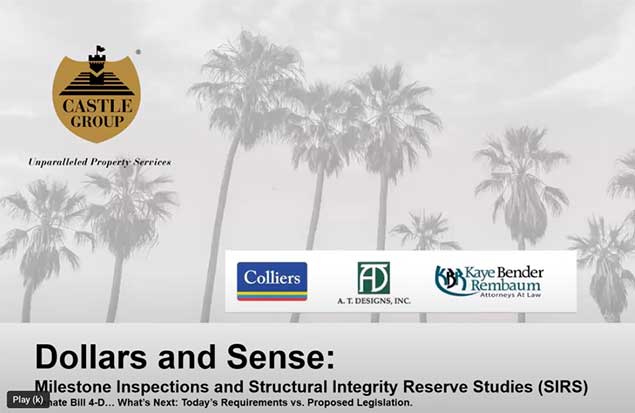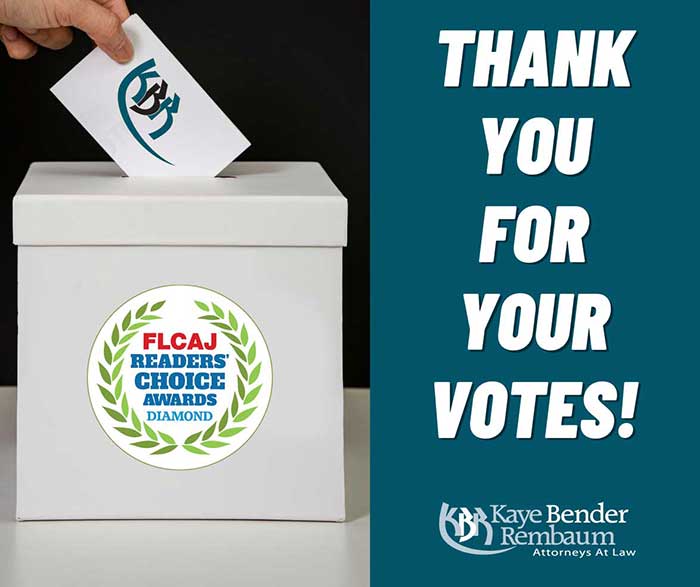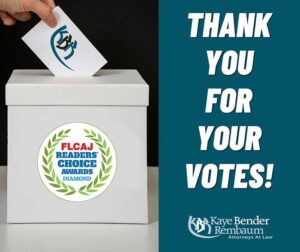Sunshine with a Chance of Screaming Children? Not in My Community! “55+” Communities Under the Housing for Older Persons Act

Florida’s “55+” communities are no longer required to be registered with the Florida Commission on Human Relations, an agency created by the Florida Legislature in 1969 to enforce the Florida Civil Rights Act, which includes Florida’s Fair Housing Laws. However, a community association qualifying as housing for persons 55 years of age or older must still have and follow procedures to determine the occupancy of the homes within the community every two years to maintain the community’s status as a “55+” community.
With Florida’s sunshine, sandy beaches, and countless activities, it is easy to understand why the Sunshine State attracts seniors from colder climates and why Florida residents approaching retirement continue to live here. For those who prefer to be surrounded by their generational peers, there are many communities to choose from that prohibit or restrict occupancy of the homes within the community by children, and more and more are being created every day. If you are an avid reader of this publication, you are already familiar with the Fair Housing Act, and may be asking yourself, “How is this possible when the Fair Housing Act prohibits discrimination in housing against families with minor children?” The answer is, there is an exception for that.
Under the Housing for Older Persons Act, housing providers, including community associations, are exempt from liability for familial status discrimination so long as certain requirements are met and maintained. Although there are three types of housing for older persons exemptions, the most prevalent exemption is for housing intended and operated for occupancy by persons 55 years of age or older. As such, “55+” communities are the focus of this article.
In order for a community to qualify as a “55+” community, the community must comply with the following requirements:
- At least 80% of the occupied homes must be occupied by at least one person who is 55 years of age or older; and
- The community must publish and adhere to policies and procedures which demonstrate the community’s intent to be a provider of housing for persons 55 years of age or older; and
- The community must comply with rules established by the U.S. Department of Housing and Urban Development (“HUD”) for age verification of the community’s residents.
As provided above, a housing provider must publish and adhere to policies and procedures that demonstrate its intent to operate as a “55+” community. For community associations, these policies and procedures are best placed in the homeowners’ association’s declaration of covenants or the condominium association’s declaration of condominium. The Housing for Older Persons Act sets out the following nonexclusive factors that demonstrate a housing provider’s intent to operate as an older persons’ community:
The following factors, among others, are considered relevant in determining whether the housing facility or community has complied with this [demonstration of intent to operate as an older persons’ community] requirement:
- The manner in which the housing facility or community is described to prospective residents;
- Any advertising designed to attract prospective residents;
- Lease provisions;
- Written rules, regulations, covenants, deed or other restrictions;
- The maintenance and consistent application of relevant procedures;
- Actual practices of the housing facility or community; and
- Public posting in common areas of statements describing the facility or community as housing for persons 55 years of age or older.
The community association must be able to produce, in response to a complaint filed under the Fair Housing Act, verification of compliance with the 80% occupancy requirement, discussed above, through reliable surveys and affidavits. A community association’s failure to survey its list of occupants in accordance with its age verification procedures does not demonstrate intent to be housing for older persons and could jeopardize the community’s status as a “55+” community.
In performing the required occupancy survey, any of the following documents are considered reliable documentation of the age of the occupants of the homes within the community to ensure that at least one occupant of at least 80% of the homes within the community is 55 years of age or older:
- Driver’s license;
- Birth certificate;
- Passport;
- Immigration card;
- Military identification;
- Any other state, local national, or international official documents containing a birth date of comparable reliability; or
- A certification in a lease, application, affidavit, or other document signed by any member of the household age 18 or older asserting that at least one person in the unit is 55 years of age or older.
Now that we know the survey must be done every two years to ensure that at least one occupant of at least 80% of the homes within the community is 55 years of age or older, what about the remaining 20% of the homes? The remaining 20% of the homes may be occupied by persons under the age of 55, and the community may still qualify as a “55+” community. Notwithstanding this 20% allowance, a community association may require that 100% of the homes be occupied by at least one person 55 years of age or older, or that 80% of the homes be occupied exclusively by persons 55 years of age or older. Although up to 20% of the homes within a “55+” community may be occupied exclusively by persons under the age of 55, a community association allowing this occupancy needs to plan with care any attempt to permit the entire 20%, or a large portion of the 20%, of the remaining homes to be occupied exclusively by persons under the age of 55 because doing so could endanger the community’s housing discrimination exemption, particularly in the event a qualifying occupant who is over the age of 55 dies when all the remaining occupants of the home are under 55 years of age.
Community associations should also be aware that local laws may provide for additional protected classes against which housing discrimination is prohibited, including, for example, discrimination based upon age, sexual orientation, marital status, and gender identity or expression. Therefore, a community association should contact its attorney before establishing policies and procedures restricting occupancy based on age or affecting survivors’ rights to property.
Similarly, although the Housing for Older Persons Act provides an exemption from liability for familial status discrimination for those communities that comply with its requirements, the Housing from Older Persons Act does not protect housing providers from liability for housing discrimination because of race, color, religion, sex, disability, or national origin under the Fair Housing Act.













